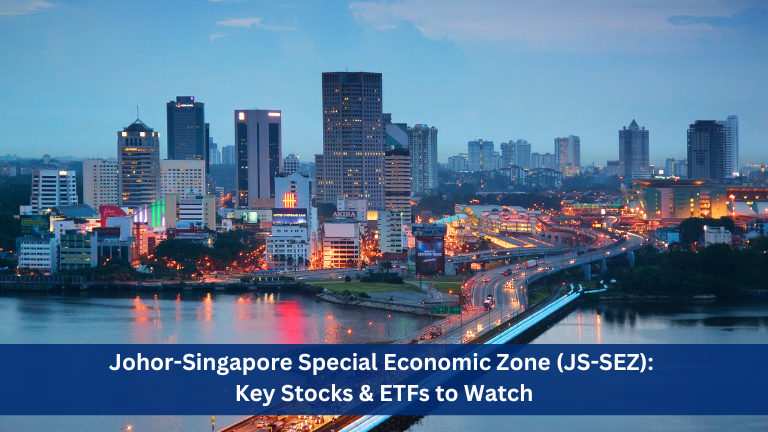As we kickstart the month of October, let’s look at what’s moving markets right now. Danish Lim, analyst at Phillip Nova shares his sentiments.
- Things are not looking that much different from September. Major US indices saw a considerable decline last night after job openings data came in higher than expected, which supports the Fed’s higher for longer messaging and increases the risk of another rate hike this year. The Dow Jones even turned negative YTD. There is also probably some lingering risk-off sentiment being carried over from September- which ended up being the worst month of 2023 for both the Nasdaq, as well as the S&P 500.
- Things will likely remain volatile in October, especially as it looks like markets are finally coming to terms with the reality that interest rates will be staying higher for longer.
Possibility of Recession, according to the analyst
- A recession will likely hit the US but I think the difficulty is predicting the severity of it as well as when it will happen. I believe investors are probably being overly optimistic when it comes to predicting a soft landing. Because, based on historical data, out of 11 tightening cycles from 1965 to 2022, a soft landing has only happened ONCE and that was in 1995, and at that time, the yield curve was never inverted, unlike how it is right now. And as we all know, an inverted yield curve, is probably one of the most widely used leading indicators of a recession.
- So although a soft landing is possible, I think there are good reasons to think otherwise and it would be better for investors to err on the side of caution, especially given the lagged impact of monetary tightening- we really aren’t sure when the full cumulative impact of 525bps of rate hikes will start to bite the economy.
How would a US recession impact global markets?
- If a recession were to happen, it would definitely have a significant impact on global markets because the US is the largest economy in the world and it’s also a major trading partner for many countries.
- What we could see happen is an even more pronounced slowdown in global trade, especially because the US is the world’s biggest importer. A recession would reduce demand of goods and services across the globe, and this will weigh on economic growth as well as GDP, which will in turn affect corporate earnings and stock prices.
- Of course, not all global stock markets will be affected equally. Markets with a higher correlation with the US, such as Canada who has a positive correlation of +0.67 with the S&P 500, will be more greatly impacted by a US recession compared to Japan, has a correlation of 0.10 TO THE S&P 500.
Hawkish comments from Fed officials
- Markets have been reacting negatively to Fed officials’ hawkish comments as they slowly come around to the fact that rates are most likely going to be held higher for longer.
- There has been an increase in risk-off sentiment, as investors and analysts who were banking on early rate cuts had to re-calibrate their expectations.
- Earlier this year, most people were expecting rate cuts to come by the end of 2023, or in early 2024. But right now because of the strong economy investors have had to price out their recession expectations, as well as rate cuts, to happen in September 2024.
Outlook for Treasuries
- Treasury yields have risen, 10Y treasury yields are at their highest level since the Global Financial Crisis at around 4.8%.
- Up until recently, people were expecting a recession to happen, so they were expecting some rate cuts down the road, which helped push long-term yields down.
- But now, with the US economy still resilient, markets have started to price out recession risks as well as their expectations for rate cuts on the belief that the economy can handle higher interest rates.
- What we have been seeing since early September is what we call a “Bearish Steepening” of the yield curve. Where long-term yields like the 10Y yield increases at a faster rate compared to shorter-term yields like the 3Mth yield which is hovering around 5.5%.
- This “Bearish Steeping” of the yield curve typically indicates the market expects inflation to remain elevated and consequently interest rates are also expected to remain higher for longer, with rate cuts unlikely to happen anytime soon.
- Currently, Markets have raised the odds of a November rate hike to about 33%, up from 16% last week. So the odds are still leaning towards no rate hike next month. BUT, the market is also pricing in about a 46% chance of a hike in December. So again, the interest rate trajectory still looks very unclear.
How the current movement in Treasuries is affecting equity markets
- Equities historically have had an inverse relationship with Treasury yields. This is because higher yields offer investors an alternative investment in the form of treasury bonds or T-bills, and in a more local context, you can think of Fixed Deposits, when interest rates rose the returns offered also increased. And this in a way increases competition and investors may reallocate their capital towards treasuries to benefit from the higher yields.
- More importantly, Tech and growth stocks have been under pressure because most of their sky-high valuations comes from investors expecting significant profit growth in the future.
- But higher yields will result in a lower present value of their expected cash flows because they will be discounted at a higher discount rate. All this sounds complicated, but this is a key part what we call the discounted cash flow valuation model which is widely used for stock valuations in the industry.
- So as long as treasury yields remain high, equities are expected to remain under pressure
Investor Sentiments and whether October will still see a bounce back in markets
- We have not seen any substantial rally even after the US averted a government shutdown. This tells us a lot about where investors sentiment is at the moment.
There is a lot of uncertainty surrounding the interest rate trajectory as well as the state of the US economy- 2 thing that will most likely determine the market direction over the coming weeks.This could mean that the chances of a bounce back is low, I still see a lot of challenging macro fundamentals and headwinds for equities.
Regional markets performance
- The performance of regional equities should remain weak, and although we have seen some signs of improving fundamentals, the Hang Seng Index actually fell as much as 3.4% yesterday, and this is after their public holiday on Monday.
- tThis is very important because regional stock markets such as Indonesia, Philippines, Australia, and even Singapore, actually correlates more with the Hang Seng Index than the S&P 500. The STI for example, has a positive correlation of 0.43 with the Hang Seng Index, compared to around 0.27 with the S&P 500.
- Recently we’ve seen some banks turn bullish on Chinese equities because they believe that the market is nearing or at a bottom. But I believe that until the issues in the property sector are properly resolved, it is unlikely for sentiment to recover meaningfully enough for a substantial rebound in the stock market. And it’s important to remember that the property sectors accounts for about 30% of China’s GDP and it’s the single biggest contributor to their economy.
- And so far, the property sector hasn’t really showed any signs of recovery. Especially given all the headlines we’ve seen or heard regarding property developers that are under distress like Country Garden and Evergrande.
Will markets will nosedive in October?
- Markets might nosedive in October but things will depend on key economic releases, including this Friday’s nonfarm payrolls.
- Estimates for nonfarm payrolls are pointing to a decline in job growth. But a higher than expected reading, just like what we saw with yesterday’s job openings data, could strengthen the Fed’s higher for longer narrative and increase the risk of another rate hike this year, and again spark a negative reaction in stock markets.
- And if this does happen, we could see stock markets perform even worse than September.
Take a position against the October effect with US shares, ETFs, or Futures. Trade on Phillip Nova now, zero platform and zero custodian fees.
Try a free demo of Philip Nova 2.0 today!
Click here to listen to the podcast for more on our prediction on October Market Outlook
Trade Stocks, ETFs, Forex & Futures on Phillip Nova
Features of trading on Phillip Nova
- Gain Access to Over 20 Global Exchanges
Capture opportunities from over 200 global futures from over 20 global exchanges
- Trade Opportunities in Global Stocks
Over 11,000 Stocks and ETFs across Singapore, China, Hong Kong, Malaysia and US markets.
- Over 90 Technical Indicators
View live charts and trade with ease with over 90 technical indicators available in the Phillip Nova platform
- Trade Multiple Assets on Phillip Nova
You can trade Stocks, ETFs, Forex and Futures on a single ledger with Phillip Nova






